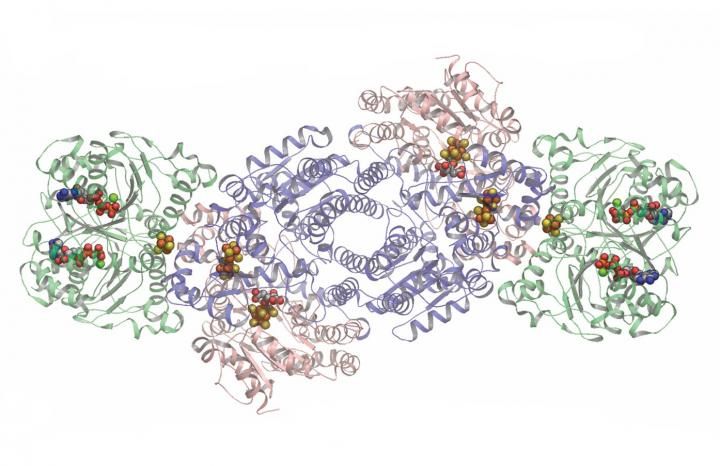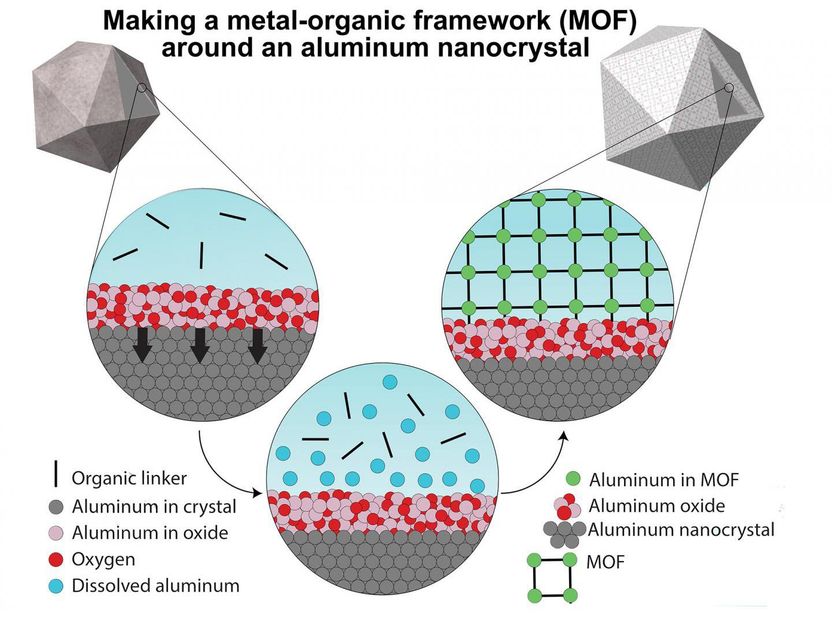New polymer made from recycled waste has real magnetic appeal
Renewable material has many uses - from robotics and construction to water purification
A new multi-functional material which can be used to purify water, as a recyclable construction material, and as a lightweight machine component for possible use in soft robotics, can also be moved remotely by a magnet.

Electronics and robotic equipment could one day be made from renewable materials so landfill waste can be reduced.
pixabay.com
The new material that has been created and tested in the Chalker Research Lab at Flinders University is made from magnetic iron particles and a sulfur-rich polymer, which combines elemental sulfur (a by-product of petroleum refining) and an unsaturated plant oil, such as canola oil.
A mixture of these substances is simply hot-pressed to make the key material, with the iron particles imparting the ability to move the material with a magnet.
The iron also allows the material to be heated very rapidly with microwaves. This enables curing into a desired solid shape within seconds.
This versatile new material is also recyclable, as it can be ground up and re-shaped multiple times.
The study - “Magnetic responsive composites made from a sulfur-rich polymer”, by Nicholas Lundquist, Yanting Yin, Maximilian Mann, Samuel Tonkin, Ashley Slattery, Gunther Andersson, Christopher Gibson and Justin Chalker – has been published in the journal Polymer Chemistry.
It marks another significant development from the team in the Chalker Research Lab, which continues to make important advances in green chemistry through creating new molecules and materials.
Lead author and Flinders University PhD Dr Nic Lundquist explains that the research team used the magnetic composite material in several applications. For instance, they used it to bind mercury in mine tailings, and then they retrieved the material (bound to mercury) with a magnet.
“This is a simple way to remove toxic metals from complex mixtures,” says Dr Lundquist.
The magnetic-responsive material was also demonstrated to be an effective binder for new construction materials, charting new paths for converting waste into value-added products.
The team also fashioned a solenoid valve from the material, by rapidly shaping and curing the machine component in a microwave. The valve component was one-tenth of the mass of the original all-metal component.
“I’m very excited about the possible new applications of these polymers and can envision uptake in different fields, from environmental remediation to robotics,” says Dr Lundquist.
Matthew Flinders Professor of Chemistry Justin Chalker says the new research provides important additional evidence of the potential and versatility of sulfur-rich polymers.
“This study illustrates the expanding utility and reach of sulfur-rich polymers,” says Professor Chalker. “Heavy metal remediation, novel construction materials and light-weight and recyclable machine components were all made from this single, versatile material.”
Original publication
Other news from the department science
These products might interest you

Eclipse by Wyatt Technology
FFF-MALS system for separation and characterization of macromolecules and nanoparticles
The latest and most innovative FFF system designed for highest usability, robustness and data quality

HYPERION II by Bruker
FT-IR and IR laser imaging (QCL) microscope for research and development
Analyze macroscopic samples with microscopic resolution (5 µm) in seconds

Get the chemical industry in your inbox
By submitting this form you agree that LUMITOS AG will send you the newsletter(s) selected above by email. Your data will not be passed on to third parties. Your data will be stored and processed in accordance with our data protection regulations. LUMITOS may contact you by email for the purpose of advertising or market and opinion surveys. You can revoke your consent at any time without giving reasons to LUMITOS AG, Ernst-Augustin-Str. 2, 12489 Berlin, Germany or by e-mail at revoke@lumitos.com with effect for the future. In addition, each email contains a link to unsubscribe from the corresponding newsletter.
Most read news
More news from our other portals
Last viewed contents
Evonik plant for functionalized polybutadienes commences operation - A clear commitment to Germany as production location
AkzoNobel to take 100 percent control of Metlac Group

A cooperative way to make ammonia





























































